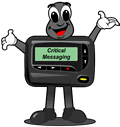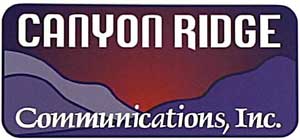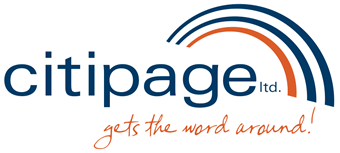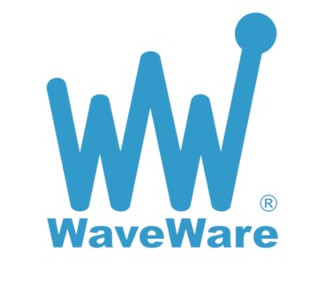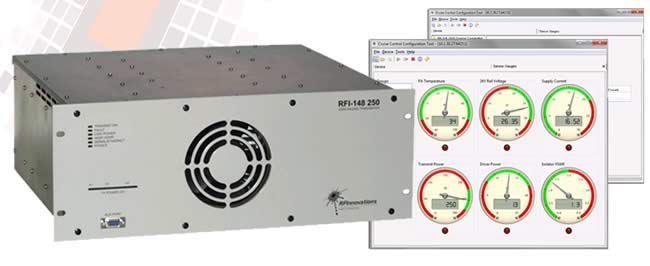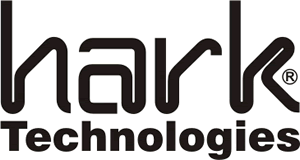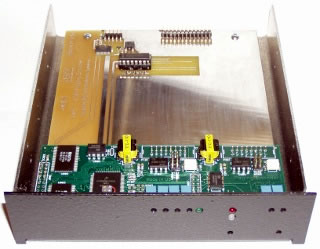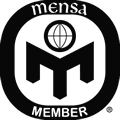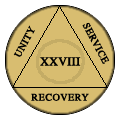Selected portions of the BloostonLaw Telecom Update, and/or the BloostonLaw Private Users Update — newsletters from the Law Offices of Blooston, Mordkofsky, Dickens, Duffy & Prendergast, LLP — are reproduced in this section with the firm’s permission.
| BloostonLaw Telecom Update | Vol. 18, No. 37 | September 23, 2015 |
Headlines
Objections to the Release of Confidential Special Access Data Denied; Procedures for Access to Data Modified The Wireline Competition Bureau (WCB) has denied the objections filed by a number of companies against the release of confidential and highly confidential information submitted in response to the data collection in the special access proceeding. (WC Docket No. 05-25; RM-10593) In the special access rulemaking proceeding, providers and purchasers of special access and certain entities providing “best efforts” broadband Internet access service in areas where the incumbent local exchange carrier (ILEC) is subject to price cap regulation were required to submit data regarding locations with connections, prices charged to customers at the circuit-level, maps showing fiber routes and points of interconnection, revenues and expenditures. According to the WCB, the " Protective Order adopted in the special access proceeding limits access to the confidential information collected to counsel and consultants, and their employees, not involved in the competitive decision-making activities of a client in competition with or in a business relationship with a party that submitted data in response to the collection. The Protective Order further limits access to the most competitively sensitive information, designated as Highly Confidential Information and Highly Confidential Data, and the NORC Data Enclave to outside counsel and outside consultants who are not involved in competitive decision-making." To access either Confidential or Highly Confidential Information, requesting parties must file with the WCB executed Acknowledgments of Confidentiality (Acknowledgments) certifying they are not involved in competitive decision-making activities and agreeing to be bound by the terms of the Protective Order . Parties who submit Confidential and Highly Confidential Information to the FCC (Submitting Parties) can object to disclosure of information submitted to any party requesting access within five business days of release of a public notice listing the party seeking access. According to the WCB, in response to a public notice released on June 24, 2015, fifty individuals executed Acknowledgments in response. The WCB released a public notice (Acknowledgment Public Notice) on July 10, 2015, identifying those individuals. Therefore, pursuant to the terms of the Protective Order, Submitting Parties had five business days from the release of the Acknowledgment Public Notice to object, until July 17, 2015. Absent the filing of an objection, potential Reviewing Parties would have authorization to access confidential and highly confidential data and information collected once made available by the WCB. Objections were filed by TransWorld Network, Corp. (TransWorld), Santa Rosa Telephone Cooperative, Inc. (Santa Rosa), John Staurulakis, Inc. (JSI) on behalf of 126 clients, US Signal Company, L.L.C. (US Signal), Brown County C-LEC, LLC (Brown County), Service Electric Cable T.V., Inc. (Service Electric), Vantage Point Solutions (Vantage Point) on behalf of 12 clients, and Parker FiberNet, LLC (Parker FiberNet) (collectively, the “Objectors”). According to the WCB, "Santa Rosa, JSI, US Signal, Brown County, Service Electric, Vantage Point and Parker FiberNet generally object to the disclosure of their, their clients’ or their members’ confidential and highly confidential information to any potential Reviewing Parties. TransWorld, Service Electric and Vantage Point object to disclosure until certain additional information is provided to help determine whether to object further against specific individuals seeking access. Additionally, JSI urged the Commission to “strictly adhere to the criteria set forth in the Protective Order” and is “confident” in the limitations set forth in the Protective Order. JSI also asked for an additional aggregation of the data beyond what was specified in the Protective Order. Finally, Service Electric and Vantage Point object to disclosure due to network security risks." The WCB rejects the majority of the objections as untimely challenges to the Protective Order that the WCB adopted in the proceeding on October 1, 2014. According to the WCB, the general objections to the disclosure of information in any form are indirect challenges to the WCB’s order adopting the Protective Order and to the protective order process itself. The WCB states that the Objectors had the clear opportunity to raise their objections but failed to do so. According to the WCB, the "Objectors knew the scope of the information they would be required to file when the Commission adopted the Data Collection Order on December 11, 2012. On June 28, 2013, the Bureau released the Protective Order Public Notice seeking comment on a draft version of the protective order and specifically seeking comment on 'whether the procedures in the draft Protective Order adequately protect the commercial sensitivity of the collected information.' In response, the Bureau received five comments, none from the Objectors." Further, the WCB states that the Objectors did not file a petition for reconsideration or an application for review after adoption of the Protective Order on October 1, 2014. According to the WCB, "[b]ecause the Objectors failed to follow well-established, basic Commission procedures for objecting to the ability of potential Reviewing Parties to review their information pursuant to the Protective Order, we dismiss their objections as untimely." Further, the WCB finds that even if the objections were timely raised, the WCB already considered and addressed many of the issues raised in the objections when it adopted the Protective Order. Among other things, the WCB states that it previously considered Vantage Point’s concern about the protection of network location information by treating such information as highly confidential information and subjecting it to the highest level of protection. The WCB also states that Reviewing Parties are subject to non-disclosure requirements, "subject to sanctions for violations, which we will aggressively enforce." The WCB also adopts an added step of reformatting fiber route mapping data that will be viewed by authorized Reviewing Parties to mitigate risks to critical infrastructure. According to the WCB, mapping information on fiber routes will be provided "at the census block level, or alternatively showing distances to connected locations, and we will simply denote sales and purchases of bandwidth in excess of 1 gigabit per second (Gbps) and not provide the specific bandwidth amount in excess of this threshold." The WCB "will not reproduce information from providers on the starting points for connections to end user locations or on the transmission paths of the connections to end user locations. Instead, we will provide maps depicting the presence of fiber by listing all the providers with fiber facilities in a census block or by indicating a connected end-user’s location’s distance to fiber without including information on the specific route of the fiber. Finally, we will not provide geographic coordinates, Common Language® Location Codes (CLLI™ Codes) and/or street addresses for Incumbent Local Exchange Carrier (ILEC) wire centers." In response to the issues raised by the Objectors, the WCB also clarifies that parties seeking access to confidential information must identify their client. The WCB provides additional time for those raising this issue to object. The WCB also modifies the Protective Order by revising how reviewing parties will gain remote access to the Secure Data Enclave (SDE), i.e., using a software-based Virtual Private Network (VPN) in lieu of hardware-based thin client laptops. According to the WCB, the Highly Confidential Data "is only accessible via the NORC Data Enclave. The NORC Data Enclave is fully compliant with the Federal Information Security Management Act (FISMA), the Federal Information Processing Standards (FIPS) and National Institute of Standards and Technology (NIST) Security Plan 800-60 with a NIST FIPS 199 impact rating of “moderate” for the level of confidentiality required. As such, NORC has the appropriate security measures in place to protect the sensitive nature of the information collected. NORC will administer a robust tracking system to record all information accessed via the SDE to ensure compliance with the Protective Order and to assist against inadvertent disclosure. NORC will process requests for the release of any analysis results to ensure release will not include data sets. While individuals may access the data remotely through specialized software, remote users will not have the ability to save, email, download or print information using the devices." With respect to remote access to the data, NORC has upgraded its centralized database SDE software to NORC Data Enclave 3.0® Direct Web Access which will allow secure remote access to reviewing parties, who will "now be able to directly download software to their devices and utilize their Internet browser to access the SDE via a secure, encrypted gateway to a web Interface site using three layers of authentication that only allows traffic into the SDE from authorized devices." The WCB states that the "NORC remote VPN platform is functionally equivalent to a thin client. While accessing the SDE on their devices, reviewing parties will lack the ability to save, email, download or print information from the SDE. A reviewing party will still have the ability to store their analyses in a virtual locker located within the SDE environment, which is accessible only to that reviewing party. Reviewing parties will also still be able to access the same suite of software programs in the SDE that they would have utilized with thin clients. Additionally, reviewing parties will still have access to the SDE at NORC’s facilities in Bethesda, Maryland." In light of this Order, carriers that object to the release of the confidential information they provided are limited to objecting to the release to specific entities. As indicated herein, the time period for such an objection is five business days from the release of a Public Notice, which the WCB will provide on unspecified dates. For example, on September 17, the WCB released a Public Notice showing a list of additional parties that have filed Acknowledgments. Pursuant to the Protective Order, companies that submitted confidential or highly confidential information in response to the collection have until September 24, 2015 to object to the disclosure of their data and information to any of the parties listed in that Public Notice. BloostonLaw recommends, therefore, that any carriers that may wish to object to the release of their confidential information to specific entities should make arrangements with the firm in advance to monitor the release of entities seeking access to the data to ensure the ability to timely object. Law & Regulation
Comments in Special Access Proceeding Further Extended The Wireline Competition Bureau (WCB) further extends the deadlines for the filing of comments and reply comments in response to Section IV.B of the Further Notice of Proposed Rulemaking (FNPRM) in the FCC’s special access rulemaking proceeding. (WC Docket No. 05-25; RM-10593) In Section IV.B of the FNPRM, the FCC sought comment on possible changes to its rules for the special access services provided by incumbent local exchange carriers in price cap areas. Comments are now due by November 20, 2015; reply comments are now due by December 11, 2015. The WCB is extending the comment and reply comment dates to allow interested parties adequate time to access and review the confidential information collected in the proceeding. Lawmakers Defend FCC Net Neutrality Rules In Court Senator Edward J. Markey (D-Mass.), Ranking Member Anna G. Eshoo (D-Calif.) and 28 members of Congress on Monday filed an Amicus Brief with the D.C. Circuit Court of Appeals in support of the Federal Communications Commission’s (FCC) Open Internet rules. The Amicus supports the FCC’s decision that broadband Internet access is a telecommunications service and lies at the heart of the Commission’s Title II authority to put in place strong Open Internet rules. “The FCC has done precisely what Congress intended the Commission to do – classify broadband Internet access service according to its best understanding of the technology of the day, and how consumers use that technology,” wrote the members of Congress in their brief. “In light of the FCC’s findings – findings which are amply supported by evidence – this Court should uphold the FCC’s reasonable reclassification order.” The members of Congress, several of whom were instrumental in enacting the Telecommunications Act of 1996, state in the Amicus that the plain language of the Act supports the FCC’s actions. Congress crafted the definition of “telecommunications service” in the 1996 Act to make the term applicable to rapidly changing telecommunications technologies and markets on a technologically-neutral and forward-looking basis. Congress intended to preserve the FCC’s authority to forestall threats to competition and innovation in telecommunications services, even as the technologies used to offer those services evolve over time. Industry
Court Modifies Berkeley Cell Phones Warning Label Requirement A California Federal Court Judge on Monday issued an order “granting in part and denying in part” a motion to enjoin a Berkeley city ordinance mandating disclosure of possible radiation hazards posed by mobile devices. By way of background, the City Council of Berkeley, California, last May unanimously voted to require electronics retailers to warn customers about the potential health risks associated with RF radiation emitted by cell phones, becoming the first city in the country to implement a cellphone “right to know” law. The required notice read as follows: To assure safety, the Federal Government requires that cell phones meet radio frequency (RF) exposure guidelines. If you carry or use your phone in a pants or shirt pocket or tucked into a bra when the phone is ON and connected to a wireless network, you may exceed the federal guidelines for exposure to RF radiation. This potential risk is greater for children. Refer to the instructions in your phone or user manual for information about how to use your phone safely.
CTIA promptly filed suit in the U.S. District Court for Northern California seeking to halt the law before it went into effect, saying the ordinance would be misleading and give off an impression of harm and would also violate retailers’ First Amendment rights by forcing them to distribute information they might disagree with. CTIA told the court that the FCC "stated and confirmed its confidence that the federal government's conservative health and safety standards for cell phones fully protect public health. Leading global health organizations such as the American Cancer Society, National Cancer Institute, World Health Organization and the U.S. Food and Drug Administration all concurred that wireless devices are not a public health risk."
In ruling on the motion, Judge Edward M. Chen required the City to strike the reference to children from the mandated notice language but let the rest of the notice stand. The significance of the case to both sides was evident from their choice of counsel. CTIA was represented on the motion by former Solicitor General Theodore Olson while Berkeley received guidance on the case from Harvard University law professor and First Amendment expert Lawrence Lessig. Olson also argued that the ordinance is preempted by federal law because it infringes on the federal government’s exclusive authority to regulate RF emissions. But Chen, in his order, noted that the federal government itself raised safety issues when it imposed radiation limits. "While the sentence in the Berkeley ordinance regarding the potential risk to children is likely pre-empted, the remainder of the City notice is factual and uncontroversial and is reasonably related to the City's interest in public health and safety," wrote Chen, adding "to the extent the Court finds that a First Amendment claim and pre-emption claim are not likely to succeed on the remainder of the City notice language." Both CTIA and Berkley reported they were pleased with the Court’s order. “We are pleased that the court has preliminarily blocked enforcement of the Berkeley ordinance as drafted, said Olson in a prepared statement. "As the federal government has repeatedly recognized, the overwhelming weight of scientific evidence refutes Berkeley's ill-informed and misleading mandatory warnings about cellphones. We are confident that ultimately the entire ordinance will be struck down." Berkeley city spokesman Matthai Chakko said Berkeley is "very pleased with the ruling," adding that the city council would amend the ordinance to comply with the court order on Oct. 6. A similar “Right to Know” ordinance in San Francisco was blocked in 2013 on First Amendment grounds. Deadlines
SEPTEMBER 30: FCC FORM 396-C, MVPD EEO PROGRAM REPORTING FORM. Each year on September 30, multi-channel video program distributors (“MVPDs”) must file with the Commission an FCC Form 396-C, Multi-Channel Video Programming Distributor EEO Program Annual Report, for employment units with six or more full-time employees. Users must access the FCC’s electronic filing system via the Internet in order to submit the form; it will not be accepted if filed on paper unless accompanied by an appropriate request for waiver of the electronic filing requirement. Certain MVPDs also will be required to complete portions of the Supplemental Investigation Sheet (“SIS”) located at the end of the Form. These MVPDs are specifically identified in a Public Notice each year by the FCC. OCTOBER 15: INITIAL 911 RELIABILITY CERTIFICATION. The Commission’s rules require Covered 911 Service Providers to take “reasonable measures” to provide reliable service with respect to 911 circuit diversity, central office backup power, and diverse network monitoring, as evidenced by an annual certification of compliance with specified best practices or reasonable alternative measures. The Initial Reliability Certification requires covered providers to demonstrate “substantial progress” toward meeting the requirements of the full Annual Reliability Certification, which is defined as compliance with standards of the full certification in at least 50 percent of the Covered 911 Service Provider’s critical 911 circuits, central offices that directly serve public safety answering points (PSAPs), and independently monitored 911 service areas. NOVEMBER 1: FCC FORM 499-Q, TELECOMMUNICATIONS REPORTING WORKSHEET. All telecommunications common carriers that expect to contribute more than $10,000 to federal Universal Service Fund (USF) support mechanisms must file this quarterly form. The FCC has modified this form in light of its decision to establish interim measures for USF contribution assessments. The form contains revenue information from the prior quarter plus projections for the next quarter. Form 499-Q relates only to USF contributions. It does not relate to the cost recovery mechanisms for the Telecommunications Relay Service (TRS) Fund, the North American Numbering Plan Administration (NANPA), and the shared costs of local number portability (LNP), which are covered in the annual Form 499-A that is due April 1. Calendar At-A-Glance
September
Sep. 25 – Comments are due on Section IV.B of the Special Access Data NPRM.
Sep. 30 – FCC Form 396-C (MVPD EEO Program Annual Report). October
Oct. 15 – 911 Reliability Certification.
Oct. 30 – PRA Comments on the 2015 Lifeline Second Reform Order are due. November
Nov. 1 – FCC Form 499-Q (Quarterly Telecommunications Reporting Worksheet) is due. |


